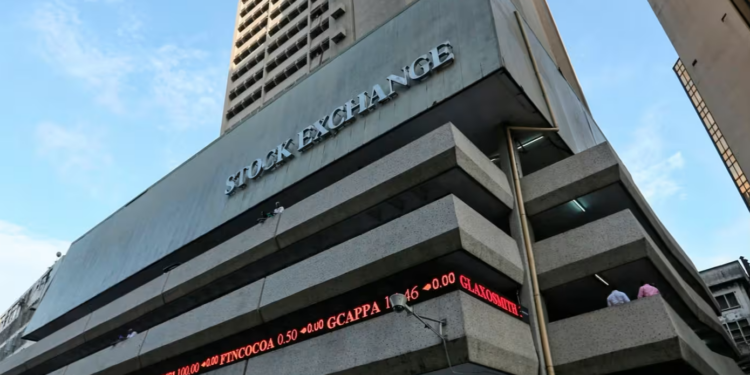Investors in a derivative-linked “synthetic” exchange-traded fund (ETF) have suffered losses after Nigeria was removed from its underlying index.
This highlights a potential weakness of the synthetic ETF structure, which relies on swap contracts with counterparties to replicate the performance of underlying assets, rather than physically owning the assets themselves.
According to a report from the Financial Times, the £68 million Xtrackers S&P Select Frontier Swap Ucits ETF (DX2Z) had 4.8% of its portfolio allocated to Nigerian stocks until October 31.
When S&P Dow Jones Indices removed Nigeria from the S&P Select Frontier index on November 1 at a “zero-price,” this portion of the fund’s portfolio was written down to zero.
In contrast, a physical index-tracking ETF or mutual fund would theoretically have been able to sell its Nigerian holdings and reinvest the proceeds back into the fund.
- “This can be seen as a structural disadvantage of swap-based exposures, as physical managers have more flexibility to trade around such events,” said Kenneth Lamont, senior fund analyst for passive strategies at Morningstar.
Capital repatriation
S&P Dow Jones removed Nigeria from the Select Frontier index due to “significant delays in capital repatriation” for investors selling Lagos-listed stocks.
Nigeria has long struggled with foreign exchange scarcity, with even importers of many goods barred from accessing dollars at the official exchange rate until the current president, Bola Tinubu, took over in May.
The central bank has since adopted a “willing-buyer and willing-seller” model, which allows the Nigerian naira to float more freely and the exchange rate to be determined by market forces.
However, Charlie Robertson, head of macro strategy at FIM Partners, an asset manager specializing in emerging and frontier markets, noted that investors faced barriers in repatriating money under the old regime.
- “You could put money in easily enough but you couldn’t get it out. You might have to wait three months or longer,” he said.
- However, Robertson said “It looks like the FX market has now gained liquidity”, with some foreign investors now putting money into Nigeria as the exchange rate has become more realistic.
- “That tends to suggest the blockages that made it hard to get the money out are easing,” he added.
Nigerian holdings
Given that liquidity in the Nigerian stock market itself has always been adequate, that suggests investors in a physically replicated ETF would not have seen their Nigerian holdings marked down to zero, even if there had been a delay in receiving the proceeds from their sale.
A number of physical ETFs, such as the iShares Frontier and Select EM ETF (FM), and VanEck Africa Index ETF (AFK), happily hold fully valued Nigerian stocks in their portfolios.
However, Lamont said that “in many cases, the outcome for investors would be similar” between synthetic and physical funds. He cited the example of Russian stocks being removed from emerging market benchmarks in 2022 when the country launched its full-scale invasion of Ukraine.
- “There are many [physical] funds out there that still technically hold Russian equities but are unable to sell them,” he said.
Michael Mohr, global head of Xtracker products, struck a similar note.
Mohr said he had seen structural market risks, as in Nigeria’s case, or geopolitical risks, as with Russia, blow a hole in synthetic ETFs twice in his 25-year career, with both occurring in the past two years.
Physical ETFs do not necessarily fare better in these episodes, though, he argued.
- “What you have in that direct replication scenario is hope. Hope that one-day tradable prices are coming back,” and investors can recover at least some value from the affected securities.
ETF book of Xtrackers
Synthetic ETFs account for €26 billion of the €147 billion ETF book of Xtrackers, the ETF arm of DWS, Germany’s largest asset manager, which is majority-owned by Deutsche Bank.
In total, they account for €169bn, or 11%, of Europe’s €1.5 trillion ETF market, according to Morningstar Direct, down from a peak of 17.6% in 2017.
Mohr argued that swap-based products can offer advantages, particularly in emerging markets where a fund manager would otherwise have to open securities accounts in every country in which it invests and will often face restrictions around limits on foreign ownership, a problem that can be offloaded to the swap counterparty instead.
- “You have to balance risks against benefits,” he said. “You have much better tracking [with a synthetic ETF] because you don’t have the tracking risk in your fund, it’s with the counterparty. You often see outperformance,” Mohr added, referring to an anomaly in the Chinese market that often allows synthetic ETFs to beat their benchmarks.
- “You have to weigh against this the risk, that in these very extreme market scenarios, you may not have hope,” he added.
Manoj Mistry, chief operating officer at white-label ETF provider HANetf, also believed there were pros and cons to an ETF’s underlying structure.
Mistry launched Xtrackers during his time as co-head of index investing at DWS, including rolling out the S&P Select Frontier Swap Ucits ETF in 2008 as the first such vehicle in the world.
























